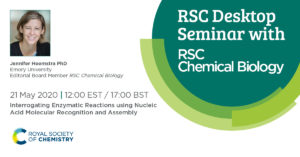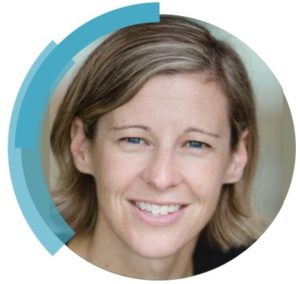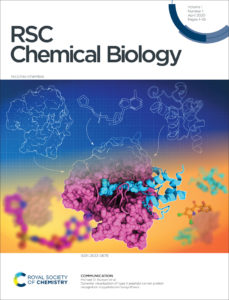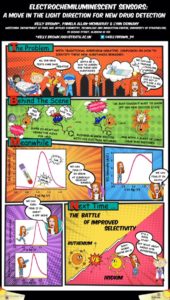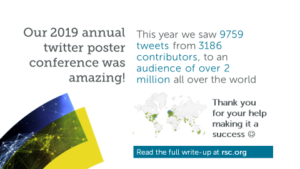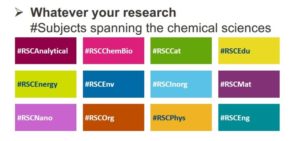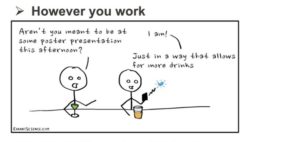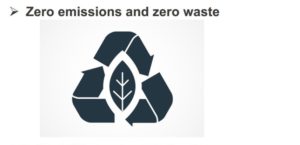Read and share research that everyone should know about.
Open access articles appear throughout our journal portfolio, and range from Research papers and Perspectives to Minireviews, Communications and Edge Articles. All of the open access articles we’ve published can be recommended for their quality, variety and relevance. The research in this collection is at the top of that list.
Click a subject to browse the articles in that field:
Analytical chemistry
Self-cleaning properties in engineered sensors for dopamine electroanalytical detection
Guido Soliveri,ab Valentina Pifferi,ab Guido Panzarasa,c Silvia Ardizzone,ab Giuseppe Cappelletti,ab Daniela Meroni,ab Katia Sparnaccic and Luigi Falciola*ab
Published in Analyst, Jan 2015 – Paper
A dual-response BODIPY-based fluorescent probe for the discrimination of glutathione from cystein and homocystein
Feiyi Wang,a Li Zhou,b Chunchang Zhao,*a Rui Wang,b Qiang Fei,a Sihang Luo,a Zhiqian Guo,a He Tiana and Wei-Hong Zhu*a
Published in Chemical Science, Jan 2015 – Edge Article
Metal-Amplified Density Assays, (MADAs), including a Density-Linked Immunosorbent Assay (DeLISA)
Anand Bala Subramaniam,a Mathieu Gonidec,a Nathan D. Shapiro,a Kayleigh M. Kressea and George M. Whitesides*abc
Published in Lab on a Chip, Dec 2014 – Paper
Exploring new dimensions in cadaveric decomposition odour analysis
P.-H. Stefanuto,*a K. A. Perrault,b R. M. Lloyd,c B. Stuart,b T. Rai,d S. L. Forbesb and J.-F. Focanta
Published in Analytical Methods, Feb 2015 – Communication
Back to top
Biological chemistry
Kinetics of polymer looping with macromolecular crowding: effects of volume fraction and crowder size
Jaeoh Shin,a Andrey G. Cherstvya and Ralf Metzler*ab
Published in Soft Matter, Oct 2014 – Paper
Cancer stem cells: small subpopulation or evolving fraction?
Heiko Enderlinga
Published in Integrative Biology, Oct 2014 – Review
Toward organic electronics with properties inspired by biological tissue
Timothy F. O’Connor,a Kirtana M. Rajan,a Adam D. Printza and Darren J. Lipomi*a
Published in Journal of Materials Chemistry B, Feb 2015 – Highlight
Marine natural products
John W. Blunt,*a Brent R. Copp,b Robert A. Keyzers,c Murray H. G. Munroa and Michèle R. Prinsepd
Published in Natural Product Reports, Jan 2014 – Review
Back to top
Catalysis
Direct catalytic conversion of cellulose to liquid straight-chain alkanes
Beau Op de Beeck,a Michiel Dusselier,ac Jan Geboers,a Jensen Holsbeek,a Eline Morré,a Steffen Oswald,b Lars Giebelerb and Bert F. Sels*a
Published in Energy & Environmental Science, Sep 2014 – Paper
Transition metal-catalyzed direct nucleophilic addition of C–H bonds to carbon–heteroatom double bonds
Xi-Sha Zhang,a Kang Chena and Zhang-Jie Shi*abc
Published in Chemical Science, Jan 2014 – Minireview
Anatomy of gold catalysts: facts and myths
Beatrice Ranieri,a Imma Escofeta and Antonio M. Echavarren*ab
Published in Organic & Biomolecular Chemistry, May 2015 – Review
Development of a PtSn bimetallic catalyst for direct fuel cells using bio-butanol fuel
V. K. Puthiyapura,a D. J. L. Brett,b A. E. Russell,c W. F. Lin*a and C. Hardacre*a
Published in ChemComm, Jul 2015 – Communication
Back to top
Chemical biology & medicinal
Zinc isotopic compositions of breast cancer tissue
Fiona Larner,*ab Laura N. Woodley,c Sami Shousha,d Ashley Moyes,e Emma Humphreys-Williams,f Stanislav Strekopytov,f Alex N. Halliday,a Mark Rehkämperbf and R. Charles Coombesg
Published in Metallomics, Dec 2014 – Paper
Selective glycoprotein detection through covalent templating and allosteric click-imprinting
Alexander Stephenson-Brown,a Aaron L. Acton,a Jon A. Preece,b John S. Fossey*b and Paula M. Mendes*a
Published in Chemical Science, Jun 2015 – Paper
Structure-based virtual screening for fragment-like ligands of the G protein-coupled histamine H4 receptor
Enade P. Istyastono,ab Albert J. Kooistra,a Henry F. Vischer,a Martien Kuijer,a Luc Roumen,a Saskia Nijmeijer,a Rogier A. Smits,c Iwan J. P. de Esch,a Rob Leursa and Chris de Graaf*a
Published in MedChemComm, Mar 2015 – Article
The potential of nanoparticles for the immunization against viral infections
Viktoriya Sokolova,a Astrid Maria Westendorf,b Jan Buer,b Klaus Überlac and Matthias Epple*a
Published in Journal of Materials Chemistry B, May 2015 – Review
Back to top
Energy
Does it have to be carbon? Metal anodes in microbial fuel cells and related bioelectrochemical systems
André Baudler,a Igor Schmidt,a Markus Langner,b Andreas Greiner*b and Uwe Schröder*a
Published in Energy & Environmental Science, May 2015 – Paper
Aqueous dye-sensitized solar cells
Federico Bella,*a Claudio Gerbaldi,a Claudia Barolob and Michael Grätzel*c
Published in Chemical Society Reviews, Apr 2015 – Review
Semi-crystalline photovoltaic polymers with efficiency exceeding 9% in a ∼300 nm thick conventional single-cell device
T. L. Nguyen,a H. Choi,b S.-J. Ko,b M. A. Uddin,a B. Walker,b S. Yum,a J.-E. Jeong,a M. H. Yun,b T. J. Shin,c S. Hwang,a J. Y. Kim*b and H. Y. Woo*a
Published in Energy & Environmental Science, Jun 2014 – Paper
High open-circuit voltage small-molecule p-DTS(FBTTh2)2:ICBA bulk heterojunction solar cells – morphology, excited-state dynamics, and photovoltaic performance
Aung Ko Ko Kyaw,a Dominik Gehrig,b Jie Zhang,a Ye Huang,c Guillermo C. Bazan,c Frédéric Laquai*b and Thuc-Quyen Nguyen*c
Published in Journal of Materials Chemistry A, Nov 2014 – Paper
Back to top
Environmental
Rare-earth recycling using a functionalized ionic liquid for the selective dissolution and revalorization of Y2O3:Eu3+ from lamp phosphor waste
David Duponta and Koen Binnemans*a
Published in Green Chemistry, Nov 2014 – Paper
Towards a holistic approach to metrics for the 21st century pharmaceutical industry
C. Robert McElroy,a Andri Constantinou,a Leonie C. Jones,a Louise Summertona and James H. Clark*a
Published in Green Chemistry, Mar 2015 – Paper
Catalytic nanomotors for environmental monitoring and water remediation
Lluís Solera and Samuel Sánchez*a
Published in Nanoscale, Apr 2014 – Minireview
Plasmonic colorimetric and SERS sensors for environmental analysis
Haoran Wei,abc Seyyed M. Hossein Abtahiabc and Peter J. Vikesland*abc
Published in Environmental Science: Nano, Mar 2015 – Review
Back to top
Food
Variations in caffeine and chlorogenic acid contents of coffees: what are we drinking?
Iziar A. Ludwig,a Pedro Mena,b Luca Calani,b Concepción Cid,c Daniele Del Rio,b Michael E. J. Leand and Alan Crozier*a
Published in Food & Function, Jun 2014 – Paper
Corrin-based chemosensors for the ASSURED detection of endogenous cyanide
Felix Zelder*a and Lucas Tivana*b
Published in Organic & Biomolecular Chemistry, Oct 2014 – Perspective
Discrimination between lectins with similar specificities by ratiometric profiling of binding to glycosylated surfaces; a chemical ‘tongue’ approach
L. Ottena and M. I. Gibson*a
Published in RSC Advances, Jun 2015 – Communication
Food derived microRNAs
Anika E. Wagner,*a Stefanie Piegholdt,a Martin Ferraro,a Kathrin Pallaufa and Gerald Rimbacha
Published in Food & Function, Jan 2015 – Review
Back to top
Inorganic
Unprecedented silicon(II)→calcium complexes with N-heterocyclic silylenes
Burgert Blom,*a Günter Klatt,b Daniel Gallego,a Gengwen Tana and Matthias Driess*a
Published in Dalton Transactions, Nov 2014 – Pape
B. Seoane,*a A. Dikhtiarenko,a A. Mayoral,bc C. Tellez,b J. Coronas,b F. Kapteijna and J. Gascon*a
Published in CrystEngComm, Jan 2015 – Paper
Grzegorz Wesela-Bauman,*ab Simon Parsons,c Janusz Serwatowskia and Krzysztof Woźniakb
Published in CrystEngComm, Oct 2014 – Paper
Synthesis of CuInS2 nanocrystals from a molecular complex – characterization of the orthorhombic domain structure
Jorge L. Cholula-Díaz,a Gerald Wagner,b Dirk Friedrich,a Oliver Oecklerb and Harald Krautscheid*a
Published in Dalton Transactions, May 2015 – Paper
Back to top
Materials
Liquid marbles: topical context within soft matter and recent progress
G. McHale*a and M. I. Newtonb
Published in Soft Matter, Feb 2015 – Review
Yuki Kohno,ab Shohei Saita,bc Yongjun Men,d Jiayin Yuan*e and Hiroyuki Ohno*bc
Published in Polymer Chemistry, Jan 2015 – Review
Extremely tough composites from fabric reinforced polyampholyte hydrogels
Daniel R. King,a Tao Lin Sun,b Yiwan Huang,c Takayuki Kurokawa,b Takayuki Nonoyama,b Alfred J. Crosby*a and Jian Ping Gong*b
Published in Materials Horizons, Aug 2015 – Communication
Microstructure replication of complex biostructures via poly(ionic liquid)-assisted carbonization
Martina Ambrogi,a Karoline Täuber,a Markus Antoniettia and Jiayin Yuan*a
Published in Journal of Materials Chemistry A, Feb 2015 – Communication
Back to top
Nanoscience
Science and technology roadmap for graphene, related two-dimensional crystals, and hybrid systems
Andrea C. Ferrari,*a Francesco Bonaccorso,ab Vladimir Fal’ko,c Konstantin S. Novoselov,d Stephan Roche,ef Peter Bøggild,g Stefano Borini,h Frank H. L. Koppens,i Vincenzo Palermo,j Nicola Pugno,klm José A. Garrido,n Roman Sordan,o Alberto Bianco,p Laura Ballerini,q Maurizio Prato,r Elefterios Lidorikis,s Jani Kivioja,h Claudio Marinelli,t Tapani Ryhänen,h Alberto Morpurgo,u Jonathan N. Coleman,vw Valeria Nicolosi,vwx Luigi Colombo,y Albert Fert,zaa Mar Garcia-Hernandez,ab Adrian Bachtold,i Grégory F. Schneider,ac Francisco Guinea,ab Cees Dekker,ad Matteo Barbone,a Zhipei Sun,a Costas Galiotis,aeaf Alexander N. Grigorenko,d Gerasimos Konstantatos,i Andras Kis,ag Mikhail Katsnelson,ah Lieven Vandersypen,ad Annick Loiseau,ai Vittorio Morandi,aj Daniel Neumaier,ak Emanuele Treossi,j Vittorio Pellegrini,bal Marco Polini,al Alessandro Tredicucci,al Gareth M. Williams,am Byung Hee Hong,an Jong-Hyun Ahn,ao Jong Min Kim,ap Herbert Zirath,aq Bart J. van Wees,ar Herre van der Zant,ad Luigi Occhipinti,as Andrea Di Matteo,as Ian A. Kinloch,at Thomas Seyller,au Etienne Quesnel,av Xinliang Feng,aw Ken Teo,ax Nalin Rupesinghe,ax Pertti Hakonen,ay Simon R. T. Neil,az Quentin Tannock,az Tomas Löfwanderaq and Jari Kinaretba
Published in Nanoscale, Sep 2014 – Perspective
Nanostructuring graphene for controlled and reproducible functionalization
Kunal S. Mali,*a John Greenwood,a Jinne Adisoejoso,a Roald Phillipsona and Steven De Feyter*a
Published in Nanoscale, Jan 2015 – Feature
Pd-complex driven formation of single-chain nanoparticles
Johannes Willenbacher,ab Ozcan Altintas,ab Vanessa Trouillet,c Nicolai Knöfel,d Michael J. Monteiro,e Peter W. Roesky*d and Christopher Barner-Kowollik*ab
Published in Polymer Chemistry, Apr 2015 – Paper
Self-assembly of “patchy” nanoparticles: a versatile approach to functional hierarchical materials
David J. Lunn,a John R. Finnegana and Ian Manners*a
Published in Chemical Science, May 2015 – Perspective
Back to top
Organic
Biphen[n]arenes
Huanqing Chen,a Jiazeng Fan,a Xiaoshi Hu,b Junwei Ma,a Shilu Wang,a Jian Li,a Yihua Yu,b Xueshun Jiaa and Chunju Li*ac
Published in Chemical Science, Sep 2014 – Edge Article
Self-assembly of cyclic polymers
Rebecca J. Williams,a Andrew P. Dove*a and Rachel K. O’Reilly*a
Published in Polymer Chemistry, Mar 2015 – Review
Cyclopropanation using flow-generated diazo compounds
Nuria M. Roda,a Duc N. Tran,a Claudio Battilocchio,a Ricardo Labes,a Richard J. Ingham,a Joel M. Hawkinsb and Steven V. Ley*a
Published in Organic & Biomolecular Chemistry, Jan 2015 – Communication
Templating carbohydrate-functionalised polymer-scaffolded dynamic combinatorial libraries with lectins
Clare S. Mahon,ab Martin A. Fascione,bc Chadamas Sakonsinsiri,b Tom E. McAllister,b W. Bruce Turnbullb and David A. Fulton*a
Published in Organic & Biomolecular Chemistry, Jan 2015 – Paper
Back to top
Physical
Spectroscopic and computational studies of nitrile hydratase: insights into geometric and electronic structure and the mechanism of amide synthesis
Kenneth M. Light,a Yasuaki Yamanaka,b Masafumi Odaka*b and Edward I. Solomon*a
Published in Chemical Science, Jul 2015 – Edge Article
Near-infrared-induced electron transfer of an uranyl macrocyclic complex without energy transfer to dioxygen
Christina M. Davis,a Kei Ohkubo,b I-Ting Ho,a Zhan Zhang,a Masatoshi Ishida,c Yuanyuan Fang,d Vincent M. Lynch,a Karl M. Kadish,*d Jonathan L. Sessler*a and Shunichi Fukuzumi*be
Published in ChemComm, Mar 2015 – Communication
A High-Spin Square-Planar Fe(II) Complex Stabilized by a Trianionic Pincer-Type Ligand and Conclusive Evidence for Retention of Geometry in Solution
M. E. Pascualini,a N. V. Di Russo,a A. E. Thuijs,a A. Ozarowski,b S. A. Stoian,b K. A. Abboud,a G. Christoua and A. S. Veige*a
Published in Chemical Science, Oct 2014 – Edge Article
Probing the energy levels in hole-doped molecular semiconductors
Stefanie Winkler,ab Patrick Amsalem,a Johannes Frisch,a Martin Oehzelt,ab Georg Heimel*a and Norbert Koch*ab
Published in Materials Horizons, May 2015 – Communication
Back to top
| Variations in caffeine and chlorogenic acid contents of coffees: what are we drinking? |



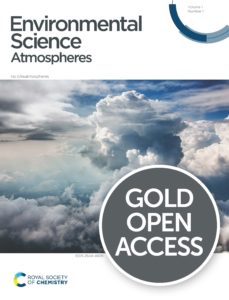









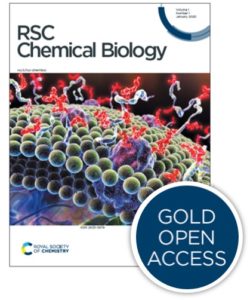 COVID-19 has rendered in-person events to be suspended or cancelled disrupting connections around the globe. The impact of these cancellations on the sharing of information and ideas, especially in the research landscape, has been dramatic.
COVID-19 has rendered in-person events to be suspended or cancelled disrupting connections around the globe. The impact of these cancellations on the sharing of information and ideas, especially in the research landscape, has been dramatic.